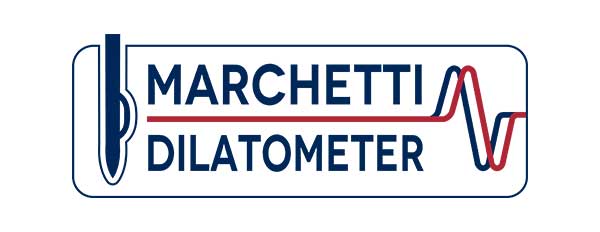The membranes that today are mostly used, for all-soil use, are the 0.25 mm thick membranes hard (high tensile strength). Membranes 0.20 mm thick (high tensile strength too) are also available, and are sometimes preferred by some researchers for investigating semiliquid soils. It is noted (a) DA and DB increase with membrane thickness (b) It is desirable to have DA, DB small, because the smaller DA, DB, the smaller their possible variations during a test. Hence thin membranes might appear preferable. However the increase of DA, DB in membranes from 0.20 to 0.25 thick is modest. Moreover 0.25 thick membranes are less likely to change DA, DB while testing in soft soils. In conclusion the 0.25 mm thick membranes are the recommended type, even in soft soils. The 0.25 mm thickness reduces the risk of breaking the membrane, and the time-consuming consequences for extracting the rods and replacing the membrane.
Membranes 0.30 mm thick are also available. But they are generally used only in very abrasive, dense, angular sand.
For some time 0.20 mm soft steel membranes have been used, but have been discontinued. Even in very soft soil they are not worthwhile, they are much more vulnerable to tear, and the reduction of DA, DB is negligible.
When a new membrane is applied to a blade, it should always be exercised by applying a pressure of 4-5 bar (for a 0.25 mm thick membrane) when the blade is in free air.
NOTE. Especially with “strong” membranes (e.g. 0.30 mm thick) it is possible, in soft soils near surface, that the soil pressure will not be able to close the membrane (i.e. no signal when stopping the penetration). In these cases apply a depression and record the A pressure as a negative value.
It is reminded that in order to execute a seismic test (by SDMT), the membrane has to be closed, for completeness of the electrical circuit. Therefore, if the soil pressure is insufficient to close the membrane, the operator should apply a depression during the SDMT execution.

